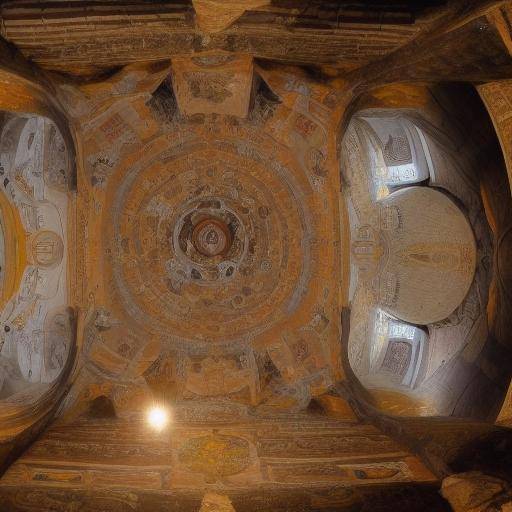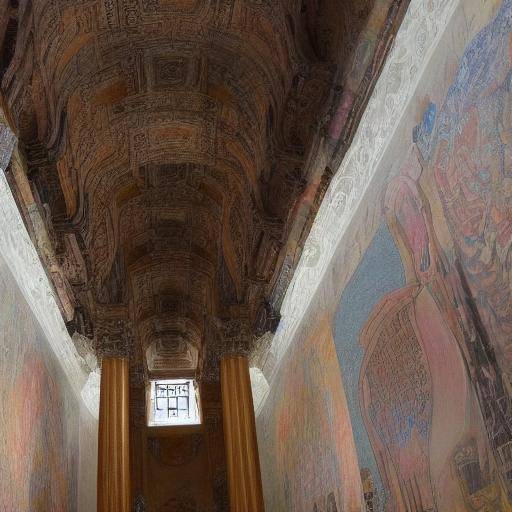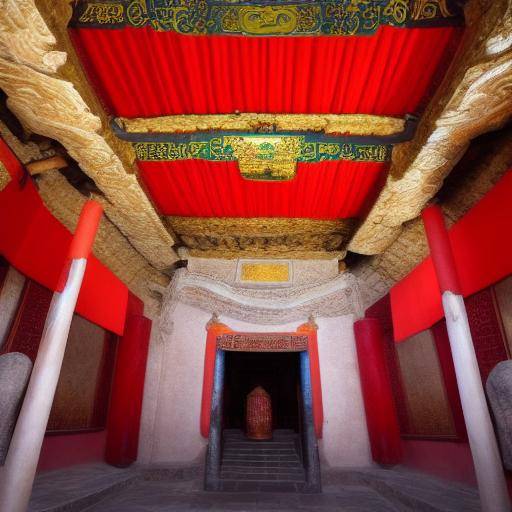
The Temple of Heaven in Beijing, also known as Tiantan, is a historical monument that embodies the spirituality, imperial architecture and Chinese astronomy. This emblematic site has witnessed important rituals and imperial ceremonies throughout history, and its cultural significance transcends even China's borders. In this article, we will explore the profound cultural lessons that the Temple of Heaven offers, from its rich history to its impact on society and the contemporary world.
Introduction
The Temple of Heaven, located in the heart of Beijing, is an architectural wonder that combines spirituality with astronomical precision and imperial grandeur. Over the centuries, it has served as a symbol of connection between humanity and the cosmos, and its cultural influence continues to resonate today. In this fascinating journey through Chinese history and culture, we will explore the many facets of the Temple of Heaven, immersed in its spiritual teachings, its exceptional architecture and its deep relationship with imperial astronomy.
History and Cultural Context
Origen of the Temple of Heaven: An Imperial Legacy
The Temple of Heaven, built during the Ming dynasty in the 15th century, represents the culmination of imperial worship to heaven, a practice that goes back to ancient China. This majestic architectural complex was the scene of elaborate rituals carried out by emperors who sought heavenly favor to ensure a good harvest and social harmony.
Spiritual and Cultural Significance
The Temple of Heaven is much more than a physical structure; it is a living symbol of the Chinese worldview, which emphasizes the harmony between man and the universe. Moreover, it exemplifies the confusing philosophy of reciprocity between heaven and earth, as well as the importance of maintaining a balance between both to ensure stability and prosperity.
Imperial Astronomy: A Link between Heaven and Earth
Within the Temple of Heaven is the famous Circular Altar, a space dedicated to astronomical rituals. The Chinese emperors, who considered themselves intermediaries between heaven and earth, performed precise astronomical ceremonies to demonstrate their connection to the heavenly order.
The Temple of Heaven in News: A Universal Cultural Heritage
Today, the Temple of Heaven is recognized as a World Heritage Site by UNESCO, which demonstrates its cultural value and its global influence. Thousands of visitors come to the site every year to marvel at its architectural beauty and immerse yourself in its rich history.
Analysis in Deep
Cultural and Social Impact
The Temple of Heaven has left a profound mark on Chinese culture, affecting all spheres of society, from arts to religion. Its influence is reflected in classical literature, traditional theater and music, highlighting its continued relevance in the daily life of the Chinese.
Temple Architecture: Creation and Symbolism
The architecture of the Temple of Heaven reflects harmony and symmetry, fundamental elements in Chinese culture. Each building, corridor and bridge was carefully designed to represent the connection between heaven and earth, manifesting the Chinese worldview in tangible and beautiful forms.
Millennial Astronomy and Astronomical Knowledge
The Temple of Heaven is not only a testimony of spiritual devotion, but also a center of advanced astronomical knowledge for its time. The ancient Chinese astronomers made meticulous observations of the stars, and the temple structures were built in a way that reflected the precise understanding of the heavenly cycles.
Exhaustive examination
Contemporary Meaning of the Temple of Heaven
In today's society, the Temple of Heaven remains a symbol of cultural and national identity for the Chinese, as well as an international renowned tourist destination. Their preservation and promotion continue to foster greater understanding of the rich Chinese cultural heritage.
Comparison with Other Monuments in Beijing
By comparing the Temple of Heaven with other monuments of Beijing, such as the Forbidden City or the Great Wall of China, the diversity and complexity of Chinese history and culture are revealed. Each monument brings unique aspects that enrich the global understanding of Chinese civilization.
Practical Tips and Accessible Recommendations
Visit to the Temple of Heaven: Tips for Tourists
When planning a visit to the Temple of Heaven, it is advisable to reserve enough time to thoroughly explore the complex and appreciate its architectural and spiritual beauty. In addition, knowing their history and symbolism will enrich the experience, allowing a deeper connection with Chinese culture.
Cultural Heritage and Sustainable Tourism
The preservation of the Temple of Heaven and its environment is fundamental to ensuring its legacy to future generations. Sustainable tourism and respect for cultural heritage are important aspects to consider when visiting the site to contribute to its conservation.
Perceptions of Industry and Expert Reviews
Vision of Experts on Cultural Heritage
Cultural heritage experts highlight the importance of the Temple of Heaven as an invaluable resource to understand China's history, spirituality and ancestral wisdom. Its perspective emphasizes the need to preserve and promote knowledge associated with the Temple of Heaven for future generations.
Expectations Futures and Trends
Current trends point to greater recognition and appreciation for cultural heritage in a global context. The Temple of Heaven, being in tune with these trends, could play an even more significant role in cultural dialogue and in promoting mutual understanding.
Conclusions and FAQs (FAQs)
Conclusions
The Temple of Heaven in Beijing is a living testament to the rich spiritual, architectural and astronomical heritage of China. Its cultural impact transcends time, and its influence continues to inspire people from around the world. By understanding and assessing the meaning of the Temple of Heaven, we are connecting with a fundamental part of human history and culture.
Frequently asked questions
What is the best time to visit the Temple of Heaven?
Autumn is considered an ideal time to visit the Temple of Heaven, as the climate is pleasant and the surrounding landscape acquires tonalities that enhance its beauty.
What material is the Temple of Heaven built?
The Temple of Heaven was built mainly with wood, without the use of nails. This traditional architectural technique is a wonder of its own right.
Does the Temple of Heaven play any role in the modern life of Beijing?
Although its original function has evolved, the Temple of Heaven remains a place of spiritual and cultural importance for the inhabitants of Beijing, where traditional events and celebrations are held.
Why is the Temple of Heaven considered a World Heritage Site by UNESCO?
The Temple of Heaven represents an exceptional achievement of Chinese philosophical and religious thought, as well as a masterpiece of architecture and urban design that influenced the development of Chinese culture and society and beyond.
What ceremonial activities were carried out in the Temple of Heaven?
Ceremonial activities in the Temple of Heaven included alkylo ritual offerings, such as the annual prayer ceremony for the good harvest, which reflected the importance of agriculture in traditional Chinese society.
What is the importance of blue in the architecture of the Temple of Heaven?
The blue colour, present on the roofs of the Temple of Heaven, represents the sky, a symbolic manifestation of the connection between man and the heavenly, highlighting the philosophy of harmony and balance between both.
Conclusion
In short, the Temple of Heaven in Beijing transcends the mere role of a historical monument; it is a bridge between the past and the present, between earth and heaven, between Chinese culture and the world. His spiritual heritage, magnificent architecture and deep connection to imperial astronomy make him an invaluable cultural treasure. By understanding the cultural lessons imparted by the Temple of Heaven, we embrace the wisdom and legacy of one of the world's oldest and richest civilizations.
Thus, we invite you to explore the Temple of Heaven in person and to continue learning about its cultural significance over the centuries. His influence continues to resonate, illuminating our understanding of history, spirituality and human ingenuity.
With this article, we hope to have provided an integral and enriching view of the Temple of Heaven, and to have aroused interest in deepening the exciting Chinese culture that this monument represents.
A journey of cultural discovery awaits in the Temple of Heaven in Beijing!
Remember, ancient wisdom awaits in every corner, exploits and absorbs the rich Chinese culture!



